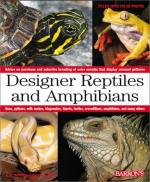|
This section contains 1,204 words (approx. 5 pages at 300 words per page) |

|
Selective breeding is evolution by human selection. As nineteenth-century British naturalist Charles Darwin noted in Variation of Animals and Plants under Domestication, selective breeding may be methodical or unconscious. Methodical selection is oriented toward a predetermined standard, whereas unconscious selection is the result of biases in the preservation of valuable individuals. Methodical selection requires great care in discriminating among organisms and is capable of rapid change in specific traits, such as milk production or silk color. Unconscious selection, more common in ancient times, resulted in grains and seeds such as wheat, barley, oats, peas, and beans, and in animal traits such as speed and intelligence.
Historical Overview
Selective breeding began about 10,000 years ago, after the end of the last Ice Age. Hunter-gatherers began to keep flocks and herds and to cultivate cereals and other plants. This process of domestication was probably stimulated by a combination of...
|
This section contains 1,204 words (approx. 5 pages at 300 words per page) |

|


